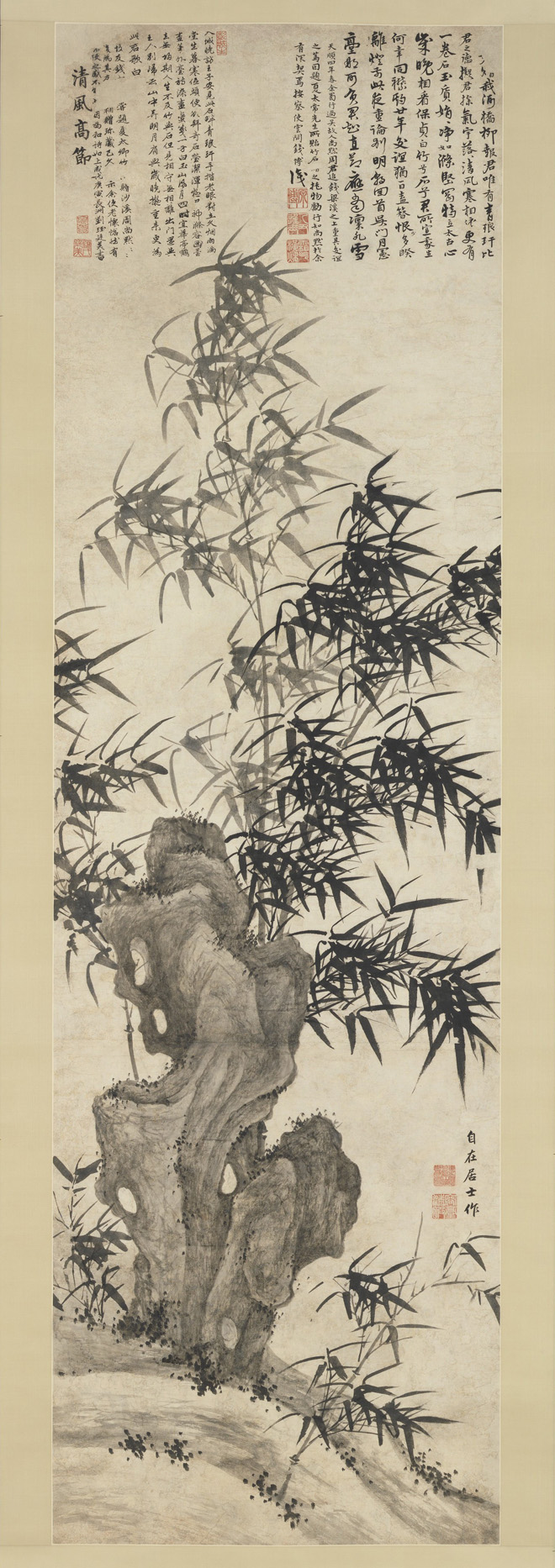Home >> Arts >> Painting >> Bamboo Paintings >> Xia Chang: Bamboo in Wind
Bamboo in Wind (清風高節)
Xia Chang (夏昶, 1388-1470), Ming Dynasty (1368-1644)
Hanging scroll, ink on paper, 203.4 x 59.7 cm, The Metropolitan Museum of Art, New York
Bamboo, which bends without breaking, has long been a symbol of integrity and strength. It was also a favorite subject of Ming and Qing scholar-painters. Xia Chang, a native of the Suzhou region, enjoyed a successful official career that led to his appointment as minister of the Court of Imperial Sacrifices in 1457. He expanded Wang Fu's (王紱, 1362–1416) style of bamboo painting to become the leading bamboo painter of his time, famous even in Korea, Japan, and Southeast Asia.
Applying calligraphic techniques to painting according to the precepts established by Zhao Mengfu (趙孟頫, 1254–1322), Xia Chang executed his bamboo stalks in the archaic seal-script style and his bamboo twigs in the "grass," or cursive-script, style. Xia Chang's calligraphic mode of bamboo painting was followed by many later Ming and Qing painters.
